A Pastor’s Prayer For The Church
June 30, 2024 • Richard Caldwell Jr. • 1 Thessalonians 3:11–13
Introduction:
The pastor’s heart is on display by concern for the church, by carefulness when it comes to the entrustment of ministry, by a mature understanding of the needs of God’s people, a mature understanding of the dangers they face, and by a consuming interest in their spiritual wellbeing.
BUT NOW WE ARE REMINDED THAT IF THAT PASTORAL LOVE TRULY EXISTS, IT WILL ALWAYS BE EXPRESSED IN A PARTICULAR GRACE — PRAYER.
No one really loves the church who doesn’t pray for the church.
No one really has the heart of a shepherd who doesn’t intercede for those in his care.
No one really understands his own need, the needs of others, or where the sufficiency rests for those needs to be met, who doesn’t look to God in prayer.
It should not surprise us then to find that after Paul’s expresses his love for this church, we immediately meet with a prayer for this church.
THIS IS A PRAYER.
Some have tried to split hairs on it — they say, “it doesn’t really take the form of address that you would find in a prayer, and so it is a sanctified wish.” But I would simply ask, “to whom does Paul direct his hopes when it comes to this wish?” Sometimes prayer takes THIS VERY FORM.
We are not just instructed by the FACT of Paul’s intercessions for the church, we are instructed by the content of that intercession.
PAUL’S PRAYER REMINDS US OF WHAT WE NEED AS A CHURCH.
Paul’s example reminds us that we need to pray.
Paul’s prayer reminds us of what the people of God need.
If we wish to know how to pray for the Lord’s church, read this prayer, hear this prayer, and let our prayers be informed by what we hear.
It is a prayer rich in instruction if we carefully meditate upon it.
I. THE ADDRESS OF THE PRAYER (vs.11a)
The first thing that we note about this prayer is its form of address.
Paul’s wish or prayer is that God would direct his way to the Thessalonians.
This is putting into prayer the desire that he expressed in verse 10.
He said that they pray, earnestly, night and day, to see the Thessalonians in person, and to contribute to their spiritual growth.
Well, what he said he prays for regularly, earnestly, and with purpose — he now lifts to God again, immediately, in the letter.
A. THE NATURE OF GOD ON DISPLAY
He does so in a way that communicates the truth of the Trinity.
The Father and the Son of God can be distinguished. But there is one divine nature. And there is perfect and constant agreement between the Father and the Son in the one divine will.
TO ASK GOD TO DIRECT YOUR WAY TO THE THESSALONIANS IS A DESIRE THAT CAN BE EXPRESSED TO THE FATHER, AND AT THE SAME TIME, BE EXPRESSED TO THE SON.
The personal pronoun (He or Himself) can either be understood in a way that is emphatic (He) or reflexive (Himself). It could either be in reference to the Father only, or to both the Father and the Son. BUT WHAT IS UNDEBATABLE IS THAT THE ACTION BEING ASKED FOR IS SINGULAR, AND IT IS ADDRESSED TO BOTH THE FATHER AND THE SON.
The verb (direct) is a 3rd person singular.
William Hendriksen — “… the essential unity (hence, unity of work and purpose) of the Father and the Son is stressed, the pronoun he referring to the combination, and the singular verb (third person singular aorist optative) being employed. We consider the pronoun αὐτός intensive (hence, he), not reflexive (himself), as if the thought had ever occurred either to Paul or to Silas that they might wish to direct their own way. The context here is very clear: note verse 9: thanksgiving was offered to God, the rejoicing was in his presence; and verse 10: the accompanying prayer was, of course, also uttered to God. Hence, very logically, there follows in verse 11, “Now may he, our God and Father and our Lord Jesus,” etc. It is comforting to know that the Father and the Son are, indeed one. We never need to be afraid that the Father is less loving than the Son or that the two work at cross-purposes.”#_ftn1
[#_ftnref1
William Hendriksen, Exposition of Thessalonians, https://accordance.bible/link/read/h-k_nt_commentary#72349. Grand Rapids: Baker Academic, 1955), 90.





